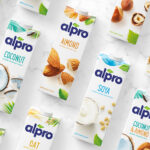Did you know that Snapchat, a company with 397 million daily active users, created its iconic Snapchat logo in just one evening? Even better, the person behind its design was not even a professional graphic designer.
Besides its unique product, Snapchat’s striking success can be attributed to its logo too. The iconic ghost is one of the most recognisable logos yet, liked by millions of community members.
Based on a Picaboo project, later renamed Snapchat, three partners launched a mobile application in 2011. The aim was to make photo and video sharing more convenient and transparent.
Snapchat: A Brief History
Stanford University student Reggie Brown coined the idea of creating a mobile application for data sharing, enabling automatic deletion for privacy. Following this, Brown collaborated with Evan Spiegel for business advice and Bobby Murphy, a coding expert.
After several months, the team successfully produced a practical implementation. However, after the application’s launch, Brown, who seeded the main idea, was removed from the company by Spiegel and Murphy. After filing litigation against the two, Brown received a compensation of $157.5 million.
Evan Spiegel crafted the first Snapchat logo, inspired by a phantom-like logo. The ghostly picture was a perfect fit to portray the fleeting nature of the app and its vanishing messages. Spiegel also shared that it took only one evening to create the logo on a computer in his bedroom.
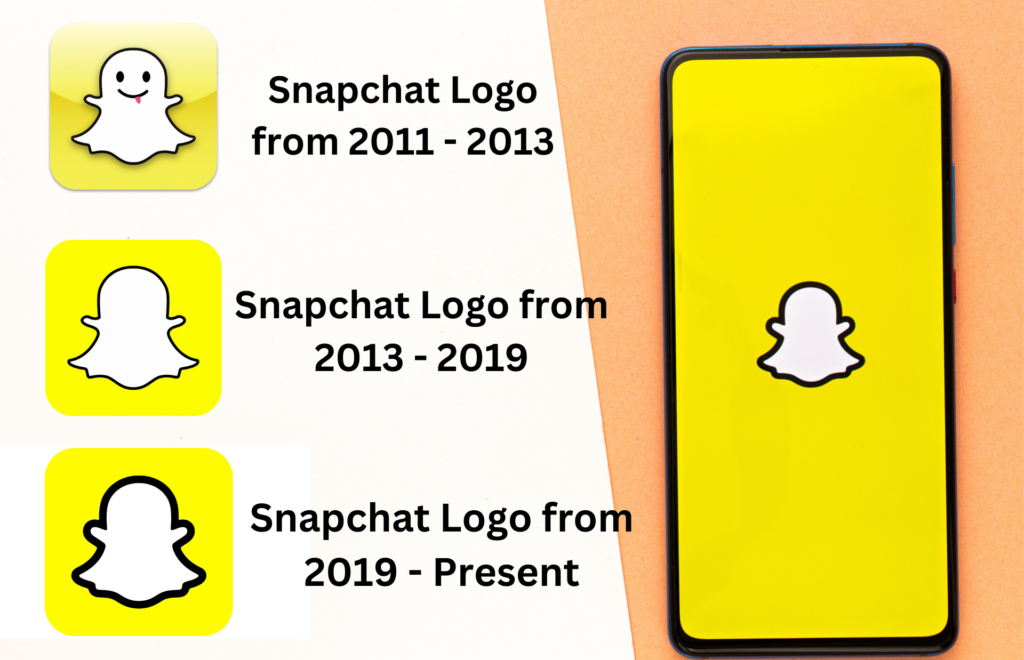
The Purpose of a Ghost on The Snapchat Logo
Besides that, why else did Snapchat opt for a ghost emblem for its logo? Snapchat users should know that the graphical representation of a ghost depicts the real essence of the application.
Since Snapchat promises complete data privacy and transparency, the iconic Ghostface Chillah was added to the logo to convey this vision. Subsequently, the ghost became a permanent part of Snapchat’s visual identity to let users know their messages (text, photos, or videos) will vanish after a certain time set by them.
Snapchat Logo Evolution
Snapchat has an outstanding evolution, from its cheeky ghost face to thicker borders on a consistent background. The changes in the Snapchat logo constitute three phases:
2011 – 2013
The first Snapchat logo was named Picaboo, which reads as ‘Pic a Boo’ – a Spanish translation of ‘Photo of a Ghost.’ Thus, that’s how the silhouette of a ghost transpired into the logo.
The first version portrayed a grinning ghost with a smiling face and a protruding tongue. At that time, the smiling ghost also earned the nickname ‘Ghostface Chillah’ from Spiegel’s love for Wu-Tang Clan rapper Ghostface Killah.
In terms of design, a round-headed ghost with two short arms sits on a gradient background with contrasting shades. As far as the bold choice of yellow is concerned, Evan Spiegel chose it for its uniqueness.
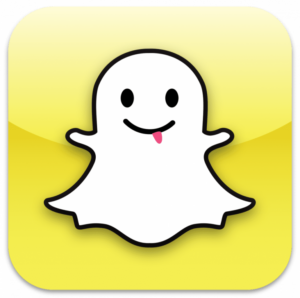
Image Source Snapchat
2013 – 2019
In 2013, the next development came when zero facial expressions became the main inspiration for a logo redesign. As the original ghost represented the community’s various emotions, portraying a specific expression did not feel diverse.
Later, the creators of Picaboo sued Snapchat for copyright infringement, which was resolved. Hence, the loss of expression, thick borders, and a constant background became significant characteristics of the new logo.
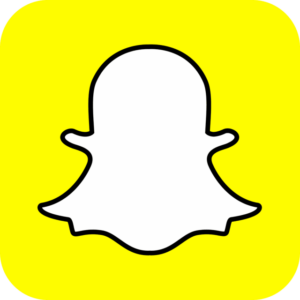
Image Source Snapchat
2019 – Present
The 2019 logo redesign is the most significant landmark in Snapchat history. With a slight tweak, the new iteration brought a bolder border. Thus, users were able to view it even from a distance.
However, these unannounced changes generated mixed reactions. In protest, some even uninstalled Snapchat, as they didn’t like the obnoxious logo. Finally, Snapchat officials stepped forward to resolve the issue, labelling these changes as a bid to make the logo more appealing.

Image Source Snapchat
In an alternative version, the yellow box features multiple black dots surrounding a thick-bordered ghost silhouette.
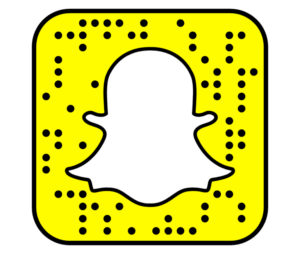
All About The Snapchat Logo: Design Elements
The multimedia message app integrates a Picaboo emblem encased in a yellow square with rounded corners. There is also a variation with black dots on a yellow background. The ghost’s outline is thicker and more prominent, with a white hue filling the inner space.
One noteworthy point is that the Ghostface Chilian on a yellow background emphasises inaccessibility and secrecy. At that time, the Snapchat logo designer found the colour yellow unique, as no other application had used this in their logos.
The initial design included a yellow box with a gradient, integrating three-dimensional shading. Later on, it became more saturated and uniform. After looking at competitors’ logos, Snapchat added the shade Pantone Yellow U or Hex 0xFFFC00.
Moreover, the instantly recognisable Snapchat logo does not use its company name or tagline as a wordmark. The most common reason is that its logo design resonates with the application so much that users instantly acknowledge it without any logotypes.
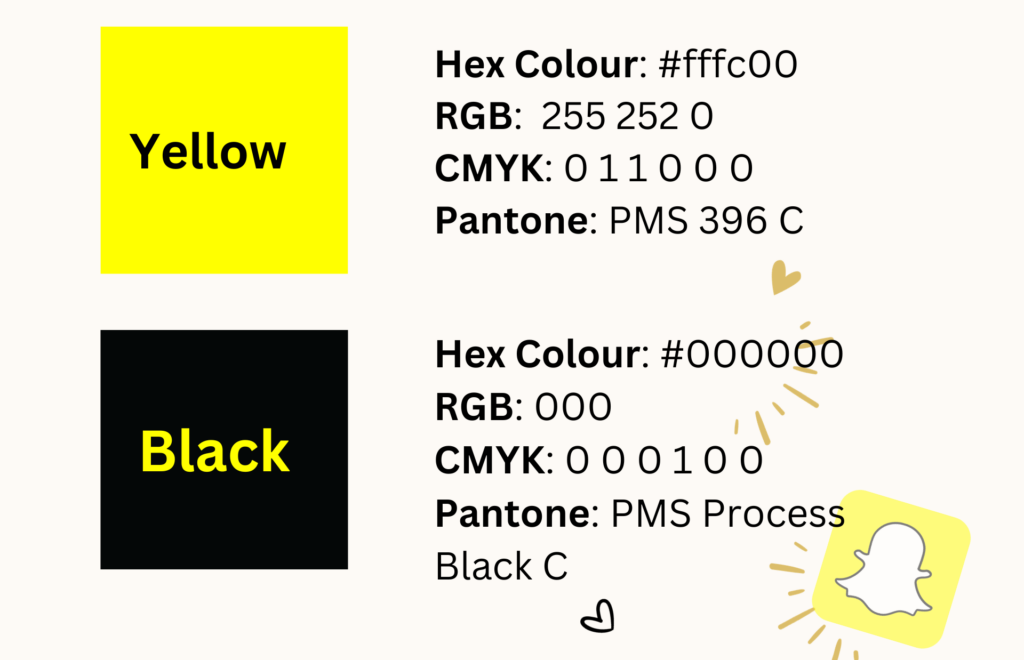
Wrapping Up Snapchat
July 8, 2011: Snapchat is launched for iOS users under ‘Picaboo’.
October 29, 2012: It became available for Android users.
October 2013: Snapchat introduced new features: Chat & Stories. The story feature enabled users to upload 24-hour short videos.
May 2014: The feature was updated to a live chat, allowing users to conduct face-to-face conversations.
August 2014: Snapchat launched a Geofilter to indicate a location while posting.
November 2014: The company launched SnapCash to send and receive money via private messages.
January 2015: The famous Snapchat filters are launched. By the end of that year, Snapchat hit 75 million users.
March 2016: Snapchat streak becomes the biggest hit of the era.
July 2016: Snapchat launches two new features: Memories and Bitmojis.
September 2016: Snapchat rebrands to Snap Inc.
April 2019: The app announces Snap Originals.
November 2020: Arrival of a TikTok clone, Spotlight.
June 2022: Snapchat+ is revealed as a new feature.
February 10, 2023: Snapchat shuts down sponsored filters. Thereafter, the company showed booming growth in its community with 750 million monthly active users.
February 27, 2023: Snapchat introduces the most beloved feature – My AI.
March 31, 2023: The company sunsets the On-Demand Geofilters program.
With a significant leap compared to the previous year, Snapchat’s daily active users have grown tremendously. Undeniably, the company’s success story is concealed within the Snapchat logo. Ranked among the top five social media apps in the world today and with 750 million monthly active users, the platform is instructive for every aspiring entrepreneur.

